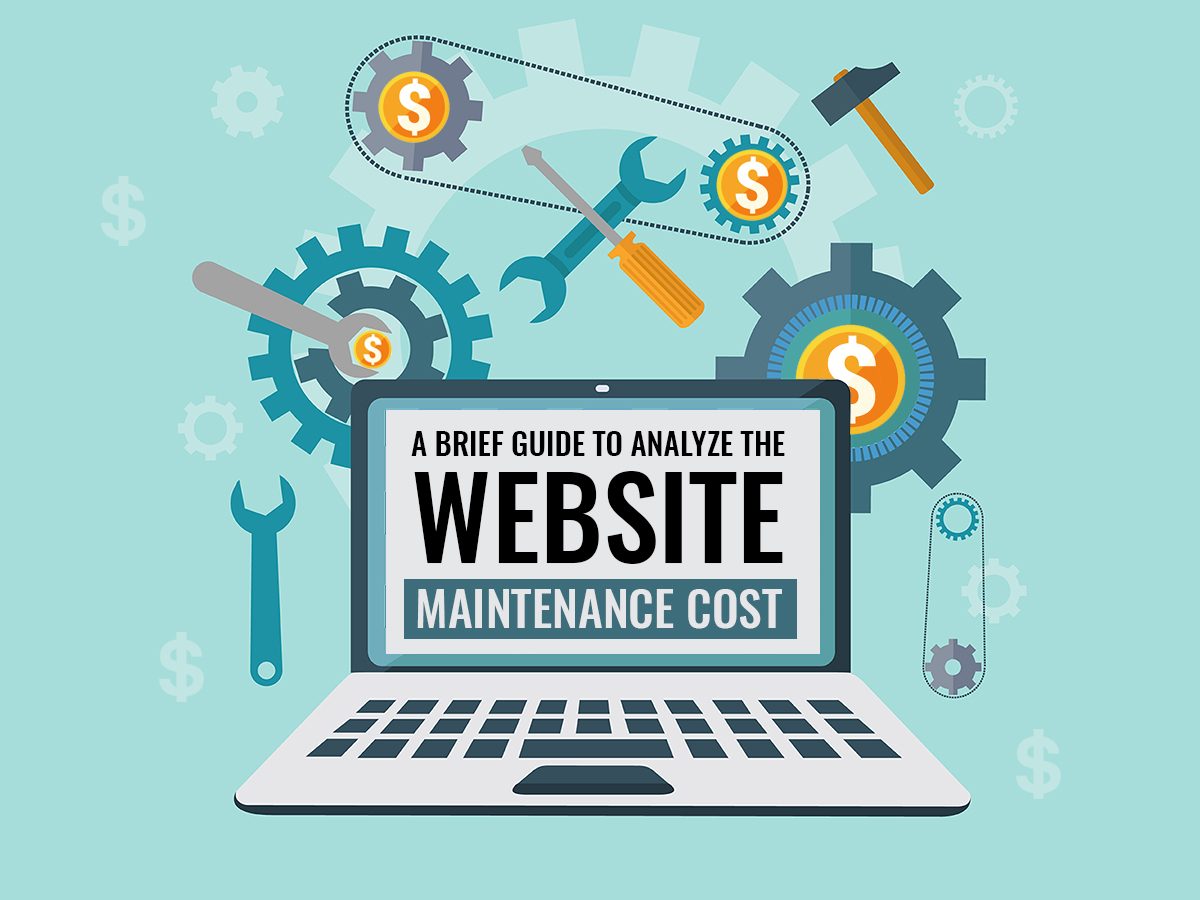Breaking Down the Costs: A Comprehensive Guide
When it comes to website maintenance, there are several costs to consider. One of the most significant expenses is hosting, which can range from $5 to $50 per month, depending on the type of hosting and the provider. For example, shared hosting plans with Bluehost or HostGator can start at around $5 per month, while dedicated hosting plans with Liquid Web or Rackspace can cost upwards of $50 per month.
In addition to hosting, website owners must also consider the cost of domain registration, which can range from $10 to $30 per year, depending on the registrar and the type of domain. Content creation is another significant expense, with the cost of hiring a writer or designer to create new content ranging from $100 to $500 per month.
Software updates are also a necessary expense, with the cost of updating WordPress or Joomla ranging from $50 to $200 per year, depending on the frequency of updates and the type of software. Security measures, such as SSL certificates and malware scanning, can add an additional $100 to $500 per year to the overall cost.
Other costs to consider include email hosting, which can range from $5 to $20 per month, and website analytics, which can range from $10 to $50 per month. By understanding these costs, website owners can better plan and budget for their website’s maintenance needs.
For example, a website built with WordPress may require the following costs:
- Hosting: $10 per month
- Domain registration: $15 per year
- Content creation: $200 per month
- Software updates: $100 per year
- Security measures: $200 per year
- Email hosting: $10 per month
- Website analytics: $20 per month
By breaking down these costs, website owners can get a better understanding of how much it costs to maintain a website and make informed decisions about their budget.
Breaking Down the Costs: A Comprehensive Guide
When it comes to understanding how much it costs to maintain a website, it’s essential to break down the various expenses involved. This includes hosting fees, domain registration, content creation, and software updates. By understanding these costs, website owners can better plan and budget for their website’s maintenance needs.
Hosting fees are one of the most significant expenses associated with website maintenance. The cost of hosting can range from $5 to $50 per month, depending on the type of hosting and the provider. For example, shared hosting plans with Bluehost or HostGator can start at around $5 per month, while dedicated hosting plans with Liquid Web or Rackspace can cost upwards of $50 per month.
Domain registration is another expense to consider. The cost of registering a domain can range from $10 to $30 per year, depending on the registrar and the type of domain. For example, registering a .com domain with GoDaddy can cost around $15 per year, while registering a .io domain with Namecheap can cost around $25 per year.
Content creation is also a significant expense. The cost of hiring a writer or designer to create new content can range from $100 to $500 per month, depending on the type of content and the frequency of updates. For example, hiring a writer to create a blog post can cost around $200 per post, while hiring a designer to create a new webpage can cost around $500 per page.
Software updates are also necessary to ensure the website remains secure and functional. The cost of updating WordPress or Joomla can range from $50 to $200 per year, depending on the frequency of updates and the type of software. For example, updating WordPress can cost around $100 per year, while updating Joomla can cost around $150 per year.
Other costs to consider include email hosting, which can range from $5 to $20 per month, and website analytics, which can range from $10 to $50 per month. By understanding these costs, website owners can get a better understanding of how much it costs to maintain a website and make informed decisions about their budget.
How to Calculate Your Website’s Maintenance Costs
Calculating the maintenance costs of a website can be a complex task, but it’s essential to understand the costs involved to make informed decisions about your budget. To help you estimate the costs, we’ve created a simple formula to calculate your website’s maintenance costs.
The formula is as follows:
Monthly Maintenance Costs = (Hosting Fees + Domain Registration + Content Creation Costs + Software Update Expenses) x 12
Let’s break down each component of the formula:
Hosting Fees: This includes the cost of hosting your website, which can range from $5 to $50 per month, depending on the type of hosting and the provider.
Domain Registration: This includes the cost of registering your domain, which can range from $10 to $30 per year, depending on the registrar and the type of domain.
Content Creation Costs: This includes the cost of creating new content, such as blog posts, articles, and social media posts, which can range from $100 to $500 per month, depending on the type of content and the frequency of updates.
Software Update Expenses: This includes the cost of updating your website’s software, such as WordPress or Joomla, which can range from $50 to $200 per year, depending on the frequency of updates and the type of software.
By using this formula, you can estimate your website’s maintenance costs and make informed decisions about your budget. For example, if your hosting fees are $10 per month, your domain registration is $15 per year, your content creation costs are $200 per month, and your software update expenses are $100 per year, your monthly maintenance costs would be:
Monthly Maintenance Costs = ($10 + $15/12 + $200 + $100/12) x 12 = $2,520 per year
By understanding your website’s maintenance costs, you can make informed decisions about your budget and ensure that your website remains secure, functional, and up-to-date.
The Hidden Costs of Website Maintenance: What You Might Not Know
When it comes to website maintenance, there are several hidden costs that can add up quickly. These costs can be overlooked, but they can have a significant impact on the overall budget. In this section, we’ll discuss some of the most common hidden costs of website maintenance and provide tips on how to mitigate them.
One of the most significant hidden costs of website maintenance is the cost of downtime. When a website is down, it can result in lost sales, revenue, and customer trust. According to a study by IT Brand Pulse, the average cost of downtime for a small business is around $10,000 per hour. To mitigate this cost, it’s essential to have a reliable hosting provider and a backup plan in place.
Another hidden cost of website maintenance is the cost of security breaches. A security breach can result in stolen customer data, lost revenue, and damage to the company’s reputation. According to a study by IBM, the average cost of a security breach is around $3.9 million. To mitigate this cost, it’s essential to have robust security measures in place, such as SSL certificates and malware scanning.
Outdated software is another hidden cost of website maintenance. When software is outdated, it can result in security vulnerabilities, slow loading times, and compatibility issues. According to a study by W3Techs, around 70% of websites use outdated software. To mitigate this cost, it’s essential to keep software up-to-date and use a content management system (CMS) that provides regular updates.
Finally, another hidden cost of website maintenance is the cost of poor website performance. A slow-loading website can result in lost sales, revenue, and customer trust. According to a study by Google, a slow-loading website can result in a 20% decrease in sales. To mitigate this cost, it’s essential to optimize website performance by using a fast hosting provider, optimizing images, and using a content delivery network (CDN).
By understanding these hidden costs of website maintenance, business owners can take steps to mitigate them and ensure that their website remains secure, functional, and up-to-date. By doing so, they can avoid unexpected expenses and ensure that their website continues to generate revenue and drive business growth.
Strategies for Reducing Website Maintenance Costs
Reducing website maintenance costs requires a strategic approach. By implementing the right strategies, website owners can save money and ensure their website remains secure, functional, and up-to-date. Here are some tips and strategies for reducing website maintenance costs:
Optimize Hosting Plans: One of the most effective ways to reduce website maintenance costs is to optimize hosting plans. By choosing a hosting plan that meets the website’s needs, website owners can avoid overpaying for hosting services. For example, a small business website may not need a dedicated hosting plan, and a shared hosting plan may be sufficient.
Use Free or Open-Source Software: Using free or open-source software can significantly reduce website maintenance costs. For example, WordPress is a free content management system (CMS) that can be used to create and manage a website. Additionally, there are many free plugins and themes available for WordPress that can enhance the website’s functionality and design.
Outsource Tasks to Freelancers or Agencies: Outsourcing tasks to freelancers or agencies can be an effective way to reduce website maintenance costs. By outsourcing tasks such as content creation, software updates, and security monitoring, website owners can save time and money. Additionally, freelancers and agencies often have the expertise and resources to complete tasks more efficiently and effectively.
Use a Website Maintenance Checklist: Creating a website maintenance checklist can help website owners stay on top of maintenance tasks and avoid costly mistakes. A checklist can include tasks such as updating software, backing up data, and monitoring analytics. By following a checklist, website owners can ensure their website remains secure, functional, and up-to-date.
Consider a Website Maintenance Service: A website maintenance service can provide website owners with a comprehensive solution for maintaining their website. These services often include tasks such as software updates, security monitoring, and content creation. By using a website maintenance service, website owners can save time and money, and ensure their website remains secure, functional, and up-to-date.
By implementing these strategies, website owners can reduce their website maintenance costs and ensure their website remains secure, functional, and up-to-date. By understanding how much it costs to maintain a website, website owners can make informed decisions about their budget and ensure their website continues to generate revenue and drive business growth.
How to Prioritize Your Website’s Maintenance Needs
Prioritizing website maintenance tasks is crucial to ensure that your website remains secure, functional, and up-to-date. By prioritizing tasks based on urgency and importance, you can ensure that your website continues to generate revenue and drive business growth. Here’s a framework for prioritizing website maintenance tasks:
Urgent Tasks: These tasks require immediate attention and can have a significant impact on your website’s functionality and security. Examples of urgent tasks include:
- Security updates: Installing security patches and updates to prevent hacking and data breaches.
- Software updates: Updating software and plugins to ensure compatibility and prevent errors.
- Backup and recovery: Backing up data and ensuring that you have a recovery plan in place in case of a disaster.
Important Tasks: These tasks are important but not urgent. They can have a significant impact on your website’s performance and user experience. Examples of important tasks include:
- Content creation: Creating high-quality content to engage users and drive traffic.
- Analytics and tracking: Monitoring analytics and tracking user behavior to optimize the website.
- SEO optimization: Optimizing the website for search engines to improve visibility and drive traffic.
Low-Priority Tasks: These tasks are not urgent or important and can be done at a later time. Examples of low-priority tasks include:
- Cosmetic updates: Updating the website’s design or layout to improve aesthetics.
- Feature additions: Adding new features or functionality to the website.
- Testing and debugging: Testing and debugging the website to ensure that it is working correctly.
By prioritizing website maintenance tasks based on urgency and importance, you can ensure that your website remains secure, functional, and up-to-date. Remember to regularly review and update your prioritization framework to ensure that it remains relevant and effective.
Common Website Maintenance Mistakes to Avoid
When it comes to website maintenance, there are several common mistakes that website owners make. These mistakes can lead to security breaches, downtime, and a loss of revenue. Here are some common website maintenance mistakes to avoid:
Neglecting Security Updates: One of the most common mistakes website owners make is neglecting security updates. Security updates are crucial to prevent hacking and data breaches. By neglecting security updates, website owners put their website and their customers’ data at risk.
Ignoring Analytics: Another common mistake website owners make is ignoring analytics. Analytics provide valuable insights into website performance and user behavior. By ignoring analytics, website owners miss out on opportunities to optimize their website and improve user experience.
Failing to Backup Data: Failing to backup data is another common mistake website owners make. Backing up data is crucial to prevent data loss in case of a disaster. By failing to backup data, website owners put their website and their customers’ data at risk.
Not Testing for Broken Links: Not testing for broken links is another common mistake website owners make. Broken links can lead to a poor user experience and a loss of revenue. By not testing for broken links, website owners miss out on opportunities to improve user experience and increase revenue.
Not Optimizing for Mobile: Not optimizing for mobile is another common mistake website owners make. With the majority of internet users accessing websites through mobile devices, it’s crucial to optimize for mobile. By not optimizing for mobile, website owners miss out on opportunities to improve user experience and increase revenue.
By avoiding these common website maintenance mistakes, website owners can ensure that their website remains secure, functional, and up-to-date. Remember, website maintenance is an ongoing process that requires regular attention and care.
Conclusion: Taking Control of Your Website’s Maintenance Costs
In conclusion, understanding and managing website maintenance costs is crucial for any business or individual with an online presence. By considering the ongoing expenses of website maintenance, including hosting, updates, and security, website owners can avoid unexpected costs and ensure that their website remains secure, functional, and up-to-date.
By following the tips and strategies outlined in this article, website owners can reduce their website maintenance costs and take control of their website’s maintenance needs. Remember, website maintenance is an ongoing process that requires regular attention and care.
By prioritizing website maintenance tasks, avoiding common mistakes, and taking advantage of cost-saving strategies, website owners can ensure that their website continues to generate revenue and drive business growth.
So, how much does it cost to maintain a website? The answer is, it depends on several factors, including the type of website, the frequency of updates, and the level of security required. However, by understanding the typical costs associated with website maintenance and taking steps to reduce them, website owners can ensure that their website remains a valuable asset to their business.
Take control of your website’s maintenance needs today and ensure that your website continues to thrive in the ever-changing online landscape.






